
Week 1
This Adventure is nothing short of miraculous. Don’t expect daily postings, because we’re busy, and on the move. Our primary ISP’s (AOL & MSN) don’t work well in South Africa, and getting to the Internet is both expensive and problematic. I’ll trust the enclosed photos to provide the proverbial “thousand words” and go from there.
Our 24 hours of flight time resulted in two pieces of lost luggage, but they eventually found their way to our Host family, Louise and Digby…and two finer people cannot easily be found. There are no words to express our gratitude for their guidance and support, and most especially for the contacts provided by Louise. As we go along we hope to show you some of the extraordinary African artwork these folks export around the world. Their core business is providing business solutions (www.process-auto.com) at Industrial Management and Control.
Here’s a brief outline of what we’ve already seen and done. We hit the ground running as a stream of people came to the Digby home to meet us and share their experience with children and HIV-AIDS. We met people who are doing what they can on a personal level to help with the staggering 80% unemployment rate that afflicts areas outside the major cities like our home base in Johannesburg. That is not a typo. I said Eighty Percent Unemployment! Later this week we will head for the town of Jaggersfontein and the home of the Vermaak’s to see what one retired couple are doing what they can to help their community.
On Monday we visited the Thembalethu Skills Project for teenage prostitutes, and a Day Care center in Alexandria, just outside Johannesburg, then we drove to Soweto to see both the Orthandweni Children’s Home and the Masibambisane Orphanage. We saw the effects of HIV-AIDS in all locations…and heard for the first time how the stigma of HIV-AIDS leads to carefully crafted reasons for the many deaths that plague this nation…and how privacy laws guard the true health status of newborns and teens alike. In other words, you have tested positive for HIV or even full-blown AIDS, but no one can say so!
Today we went to the 5 Star Princess Alice Adoption Home set atop a commanding hilltop in the midst of one of the area’s nicest neighborhoods and still living on the energy of its Founder back in 1921. The Director gave us a guided tour and explained that even at its best, the System brings babies to her doors who are so sick that in the past three months three newborns have died. The import of this when you consider that nowhere is a diagnosis of AIDS infection written down or talked about, is staggering. Later we drove back into Soweto to actually visit the township center put down in the midst of one of the rawest shanty towns you’ll ever see, and talked to the Assistant Director, Maddy, about the 173 children who depend for their very lives on the three meals a day the under-funded and dilapidated center provides. The poverty was as overwhelming as the stench from the overflowing septic system. They need everything…money, playground equipment, toilets and a new waste system. The surrounding shantytown has no running water or electricity, and the shacks are built of corrugated tin. We got to see the 173 children, ages 2 to 6, at naptime. These were the lucky ones. There are thousands of kids of just the same age who live within sight of the Center and they have, literally, nothing at all. The Shantytown is expected to double in size in five years because “illegals” are streaming in from neighboring States and the all-Black homelands where things are even worse.
Our schedule is crowded for the next two days, but my first impression is one of overwhelming sadness and crushing knowledge that, what we are so far witness to is all the mistakes of the past come to fruition. There is something terribly wrong with “the human condition” in this place of beauty and stupendous natural resources. Asking, “Where did we go wrong” and wondering, “who’s to blame” are pointless questions, however, when there is so much work to do. This isn’t about opportunity, my friends. This is all about where the next meal is coming from. HIV-AIDS just complicates the equation.
We will bring you more words and pictures from Jaggersfontein, home of the now closed diamond mine where unemployment and hope live side by side.
From Paul and Chris and Cassidy and Greg
Johannesburg, South Africa.
July 28, 2004
We are driving back from the East Rand Children's Home to Johannesburg. Africa is not as different as most Americans would believe. There is poverty of course, but there is similar poverty in America and any other country of the world. The poverty is not the problem. It is the cavalier attitude towards the epidemic which we have come to document that is the scariest. These people have accepted HIV and AIDS as a fact of life . . . no big deal.
This is the biggest shock. Many of the afflicted choose to believe that the illness is nothing but "bewitchment" or TB. When questioned, it would seem that they actually do know the facts, but choose to ignore them.
The numerous charities helping out in the community do understand and are willing to talk and teach about the issues. They are doing a good job. It seems that the majority of the people we have talked to do not want to change though.
We have seen charity after charity, supported the good ones and documented the same thing over and over again. It is now time to move on to the possible causes of the seeming repression. We talked to Bob, one of the active, artist leaders of Kliptown, a shanty town on the southern edge of Johannesburg. Bob's mother Eva has been working in Kliptown for the past fifty years to help educate the children to raise them up. Old and weary, Eva has passed on her tradition to Bob, who now in his mid thirties is recognized as a cultural leader within the town. The political leaders in the town seem not to like him. Free spirit, and teaching the youth that they don't need to spend the rest of their life in a shanty town, he encourages through the use of art and each individual's abilities. One of the things that enrages Bob the most is the fact that "his people" are always waiting for a handout, instead of figuring out how to grow their own food.
Every week the government food truck comes to Kliptown to deliver sacks of rice. We saw the lines of people with their wheelbarrows each taking a bag. Bob told us that this kind of handout is part of the problem.
Another problem that we see is the "welfare" type system. Twelve year old girls are given ZAR 170 per month per child that they have. The grandmothers who are actually raising the children, since their children have died from the epidemic receive nothing.
We need to stop interviewing the charities now and start talking to corporations and governments. In every single shanty town, guess which major global corporation has a major presence . . . that's right, Coca Cola. Another one is Castle Lagger (beer). That's it. You don't see any other commerce within the shanty towns. But Coca Cola, there they are in every single poor shanty town that we have seen. They have made themselves a part of every single culture of the world, selling non-nutritive product to people who can't afford to buy food. Are they giving anything back to these communities? We need to find out.
If anyone has any contact with any Coca Cola corporate reps please let me know.
There is very little male influence on the family life. It has been made clear to us, that African males in these shanty towns have as many different partners as they desire.
Our challenge now is to meet with the policy makers, and the corporations . . . lets see what they think about all this. There are no clear answers short of changing individual behaviors and group mentality. People are trying.
- Chris M. Allport
July 30, 2004
This has been quite a day, and tomorrow promises to be another much the same, with the exception being that we are about to travel six hours southwest of Johannesburg to the town of Jaggersfontein in the diamond mine region of this extraordinary country.
Cassidy is feeling a touch of the flu so we three guys headed down into Soweto once again with Wilson driving (he's on-loan from Louise and Digby) and along with our guide, Eunice of the Masibambisane Orphanage, we dug into some of the more promising programs in place. First we met with the Founder of P.U.S.H. (Persevere Until Something Happens), which is a non-medical volunteer program that reaches into the poorest communities to do what they can in terms of food, social service intake, and emotional support.
Everything operates on a shoe-string here. Government grants do exist but they are filled with paperwork, and most of the care-givers can't read because education has historically been denied the population most affected.
As I said yesterday, we are witness to the sins of the past come home with a vengeance. I will leave aside the Slave Trade and the Colonial Powers, but I will not leave out the exploitation of this land and her people who left their villages to work at carving out the riches of this land, trading back-breaking labor for employment and sacrificing education for hard-earned money. Foreign companies needed bodies, and scant attention was paid to education. That was left for the many types of Spiritual Advisors who all too often promised rewards in a future life to peace and prosperity in THIS life. There have NEVER been enough schools, even if there had not been the lowest sort of discrimination. The trade these people made was beyond unfair. They were NEVER given adequate compensation…and here, my friends, are the results.
I sat down with a Black "Granny" today in her tiny house in Kliptown. She is the matriarch of twenty-two people who live under her roof. All four of her daughters died (three from AIDS and one in childbirth) and they all live in a shack without running water or electricity. Words cannot express the impact of this reality.
Many of you have heard me say and write that when I look at a child, I always ask, "Where will they be in 20 years?" I am usually referring to kids in show business, but the question is valid anywhere there are children, and whatever their circumstance.
The Government admits that there are 2,800 tin shanties in Klipstown, and they admit that there are an average of ten people per home. I've told you that there are no services whatsoever, if you discount the water standpipes every 100 yards, half of which are broken, and the Port-A-Poties that provide sanitation, most of which are padlocked or vandalized. Nearly a third of these home contain HIV-AIDS victims, some near death, and almost all of the shacks provide shelter for several children. We met with one family headed by a twenty-two year old woman who is Mother to two younger siblings and a houseguest who has no hands.
What will become of these kids? I came away from today with an ache as deep as any I've ever felt. Maybe we'll see some light tomorrow.
From Paul and the Gang

Paul Petersen
|

Cassidy Boesch
|
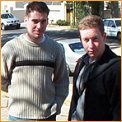
Greg and Chris
|

Child
|

Child
|
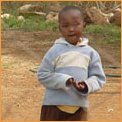
Child
|
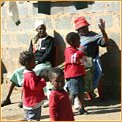
Shanty
|
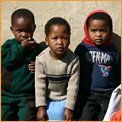
Children
|
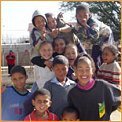
Children
|
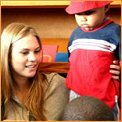
Cassidy
|
Week 2
TO OUR SUPPORTERS,
LIVE, FROM AFRICA
"You have been to places in South Africa that most South Africans have never seen.”
So said a teenage volunteer, Candace, at the Little Angels Orphanage in East Rand, about an hour out of Johannesburg. We had driven to East Rand to meet with the East Rand Children’s Fund (est. 1995), an organization hard pressed to keep up with the astonishing growth of a new “informal squatters camp” that had materialized in less than a year’s time.
How do you help in a place like this? Food first, that’s the rule.
We always leave some money with these people, and Cassidy is both discrete and generous to a fault when she presses a “donation” into the hands of these relief workers. The amount of money is not the issue, because it can be put to use immediately…a finger in the dike some say…but you can be sure it’s needed. You cannot help reaching into your pocket.
If you want to help us while we’re in Africa, the surest way to make sure we can continue to leave behind these “small gifts,” is to send a check to our Africa Fund. I promise that it will go directly into the hands of the most needy people I’ve ever seen. We’re here for another three weeks.
Now then, here’s a bit of what we’ve experienced in the past two weeks, with three more weeks to go:
Ever have one of those days when everything was just a bit off? Coming to grips with the reality that you are in a foreign country on a distant continent is not a sudden realization, but a gradual dawning. The accumulation of small, tiresome upsets and difficulties finally coalesce and you at last admit that you are indeed in a different place.
We remind ourselves that the folks here drive on the left, and yes, the water does drain anti-clockwise.
South Africa is a couple of cogs out of kilter, at least to our American perceptions. Making a hotel reservation, trying to hook up to the Internet, even ordering food is an exercise in frustration. We’re currently in a very nice middle-level hotel in Randsburg, one of the more prosperous northern suburbs, and there is no remote control for our television. Housekeeping permits us two rolls of toilet paper per week, and two bath towels. It’s one part language and another part adjacent reality. They see and hear things differently here…look for different responses…and struggle with our “accent.” English has more variations than you know.
But just when your frustration level reaches the boiling point something wonderful happens, as it did to us today when Mr. John Nash guided around his “farm,” with the highpoint being a lengthy visit to the “Cradle of Mankind” World Historical Site (as designated in 1999), which lies in a mysterious cave complex in the middle of this enormous “farm.” We’re talking a big farm here, friends…horizon-to-horizon big. Think of what you know about the King Ranch in Texas big.
“Farm” is more a term of art than a description, for there are no row crops grown here (too much theft), and within the borders of the working facility we visited you’ll find a gold mine (closed), a thoroughbred racehorse compound, guest houses on lovely lakes, and wild African game roaming over the hills and gullies under the watchful eye of the farm Manager whom the locals know to be a crack shot…and he has to be because poaching is a daily presence here as ‘locals’ invade the ‘farm’ in search of food.
We saw springbok, baboons, Eland and “Dossies” (rock hyrax). The elephants are on the next owner’s farm, and the giraffes were reported on the other half of Mr. Nash’s farm.
I want to say a word about the commitment of this man to both Build and Preserve. He knows very well the worth and value of the Game on his land, just as he knows the inestimable value of the pre-hominid artifacts found on his land. It is with the keen eye of a successful real estate developer that he views these treasures. His humility in the midst of great wealth speaks volumes.
Our impressions are so many, and so profound, that we are still in the middle of the sorting process…assigning weight and importance…and seeking words for experiences so searing that you literally have to remind yourself to breathe. Here are a few:
Cassidy pressing double the amount of a program director’s weekly salary into the hands of a woman who had just spent the last of her personal funds to feed the seventy-three children in her crèche. The woman’s reaction and near collapse was so genuine, her relief so miraculous, that none of us could speak, nor see through our tears.
An infant so underdeveloped at three years old, that he could not stand, focus his eyes, nor could he hold up his head…but he could smile and repeat “I love you” in passable English.
The Zulu grandmother who has lost her daughters who, with her HIV-Positive grandchildren sitting docilely at her feet, telling us that the first time she heard the term HIV-AIDS was at the clinic where she had taken her grandson who was very ill.
The stern and forbidding Apartheid Museum, built to convey the oppressive spiritual confinement of racial discrimination.
The on-going paleontology work done so painstakingly in the depths of a cave where erosion revealed the time of pre-hominids 2.3 million years ago.
The sight of forty-six children napping, lined up head to foot on their sleeping mats which were no more than tattered blankets on a filthy floor, utterly still because it was nap time.
The utter poverty of tin shacks crowded against each other in Alexandra, Kliptown and East Rand with raw sewage running down the center of the hard-packed dirt roads.
Children everywhere, bare foot and hungry.
We are headed for the Eastern state of Kwa-Natale this morning. The scenery, we’re told, is gorgeous. It’s what you SEE on the land that gives us such heartache.
From Africa, it’s Paul and Chris and Greg and Cassidy saying, goodbye for now.
The Elephant and the Blind Men
As a test of the renown powers of divination of the Seven Blind Men who were famous throughout Europe, an Elephant, an animal never before seen or described to the men, was led into a compound and tied to a stake before the blind soothsayers. Each seer was in turn led up to the enormous animal and allowed to place hands on a particular part of the elephant’s body, then asked to describe the animal each had touched, well away from the hearing of the other great seers. The Emperor watched with intense excitement.
From his contact with the elephant’s tail the first blind man described the beast as long and thin in form, but able to paint with the frill on the end of its rope-like tail and able to bind all with its powerful limb.
The second blind man felt the animal’s ears and proclaimed the beast to be possessed of uncanny adornments of fruit which would nourish any who came in contact with its leaves.
The third man felt the animal’s leg and stated that the beast was of sturdy construction, like a well-built house, which could weather any storm and would last ten men’s lifetimes.
The fourth man was allowed to place both hands on the animal’s bulging stomach and divined that the animal had a prodigious capacity to store grain was like unto a grain storehouse, a repository for a rich harvest.
The fifth and sixth man felt the animal’s trunk…one at the tip with its highly mobile and sensitive fleshy tip…and the sixth at the broad and deeply furrowed base of the trunk. One said that the beast was capable of building great monuments and was sure to breathe life into anything it created, and the sixth man opined that the animal was capable of lifting great weights with its crane-like arm.
The 7th man was led to the animal’s huge curving tusks and was properly awed by the texture and shape of the ivory, and he proclaimed the animal unequaled in the arts of war, wearing as it was the finest of stabbing and thrusting weapons.
When all had pronounced their weighty opinions they were led into an audience with the Emperor who ascertained that each man had given his opinion the proper thought and stood by his opinion. The Blind Men stubbornly held to the opinion created by the impression of their hands and began to argue amongst themselves until the Emperor ordered them to be silent.
“I will not call you Fools,” said the Emperor, “for each of you faithfully reported what your senses and your training revealed, and in that I find no fault with any of you.” The Blind Men were greatly relieved to hear that their lives were not forfeit.
“But I tell you as your Lord, to whom all things must be weighed and measured, that the singularity of your unsighted vision does not do the elephant justice. For in the combination of its parts it is by far more than you could even know."
So it is with Africa.

Boy without shoes
|

Cassidy and baby
|
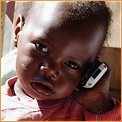
Little baby
|

Child
|

Camera
|

Chris in cave
|
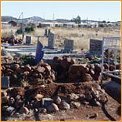
Graveyard
|
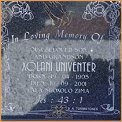
Tombstone
|

Tombstone
|

Slums
|
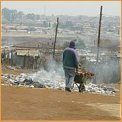
Slums
|

Toilets
|
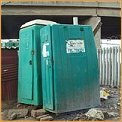
Unsanitary
|
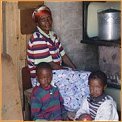
Zulu GMA
|
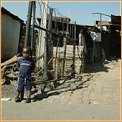
Child
|
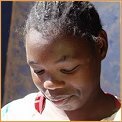
Young mom with HIV
|
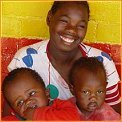
Young mom with kids
|
Week 3

Kamberg Valley
|

Kamberg Valley
|
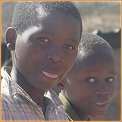
Kids
|
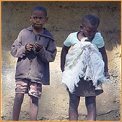
Kids
|
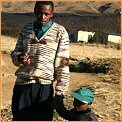
Man and child
|

Paul and locals
|

Sunset
|
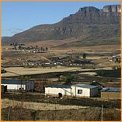
Tandella
|

Tandella
|

Wendy, Lauren & Cassidy
|